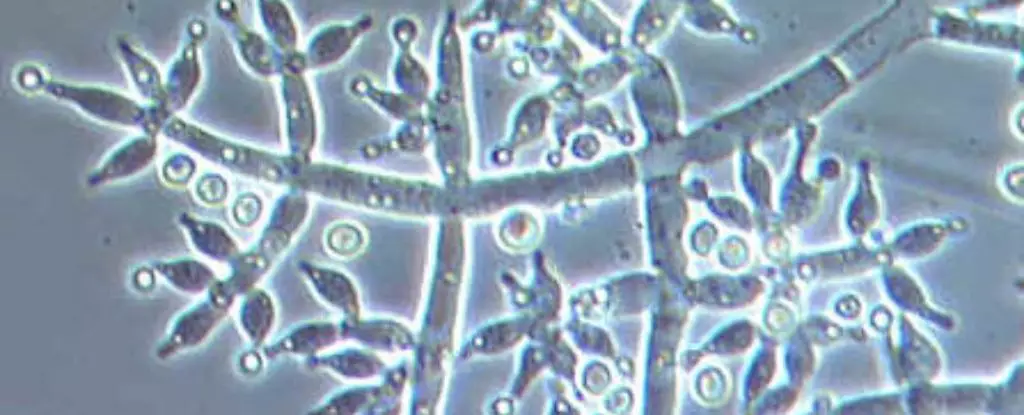The biological world is laden with intricate interconnections, and recent research reveals an intriguing element that can augment this complexity: sound. Fungi, particularly the species Trichoderma harzianum, appear to be responsive to auditory stimuli, showing enhanced growth rates and spore production, akin to a musical piece that resonates deeply within its environment. Researchers have found that when these fungi are exposed to high-frequency sounds, reminiscent of radio static, they thrive. This discovery is particularly significant given T. harzianum’s ubiquitous presence in soils and its symbiotic relationship with plant roots. It also holds the promise of revolutionizing agricultural practices, enabling farmers not just to mitigate pathogenic pests but potentially accelerate healthy plant growth.
In a controlled environment, experiments conducted by a team led by microbial ecologist Jake Robinson at Flinders University reveal stunning results: exposing Petri dishes of T. harzianum to 30 minutes of white noise significantly increases fungal growth over five days compared to their silent counterparts. This accelerative growth could hold transformative implications for soil health, accentuating the role of beneficial microbes in ecosystems often compromised by degradation. The implications of such findings may extend beyond mere academic curiosity; there is a clear application in conservation efforts as well as key agricultural practices aimed at feeding a burgeoning global population.
Potential Applications in Agriculture
Imagine farmers manipulating sound waves to optimize their crop yields. The application of sonic stimulation could serve as a biotechnological tool, promoting the growth of beneficial fungi in various ecosystems, especially within agricultural landscapes that have suffered due to conventional farming practices. The fact that T. harzianum can parasitize harmful fungi is a testament to its potential in enhancing plant health. Thus, synthesis of sound therapy with fungi could lead to innovative approaches in managing plant diseases, whilst fostering a more sustainable agricultural framework.
The Complexity of Sound Interactions
Yet, the researchers stress that the current findings warrant a cautious approach. The mechanisms through which sound enhances the growth of T. harzianum remain unclear, necessitating further investigation. One possibility posited by the researchers is that the sound waves stimulate the fungus’s receptors, triggering a mechanical response that manifests as an electrical voltage or biochemical signal. These signals could potentially redefine the way fungi operate on a cellular level, influencing gene expression and metabolic functions.
Moreover, while the sonic stimulation shows promise in some cases, sound can have adverse effects as well. For instance, previous studies have evidenced that specific sound frequencies, such as those produced by refrigerators, incubate growth in pathogenic fungi that can devastate crops. This dichotomy highlights the complexity of sound interactions with biological organisms and cautions against blanket applications without meticulous assessment.
Broader Implications for Ecological Restoration
The research team’s foresight regarding the potential of sound as a tool for ecological restoration cannot be overlooked. They posit that this study signifies an important advancement in our understanding of microbial ecology, offering pathways to leverage auditory stimuli in promoting healthier ecosystems. In a world increasingly characterized by habitat loss and soil degradation, unraveling the symphonic dialogue between sound and soil organisms may be crucial for restoration efforts.
Ultimately, while the promise of using sound as an enhancement technique in microbiology remains on the horizon, it is essential to approach this burgeoning field with careful considerations. The excitation of fungi through sound may usher in a new era of agricultural practices and soil health improvement. Future endeavors must focus on elucidating the intricate relationships between sound, fungi, and other microorganisms to fully harness this innovative approach. As scientists delve deeper into this fascinating intersection of ecology and acoustics, we may soon uncover practical applications that can reshape how we manage our agricultural landscapes and restore dormancy in degraded ecosystems. The journey is just beginning, and the melodies of nature may hold the key to sustainable agriculture and restoration of our planet’s precious soils.

Leave a Reply